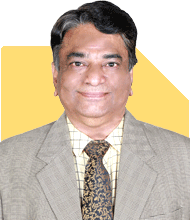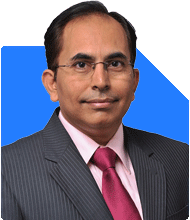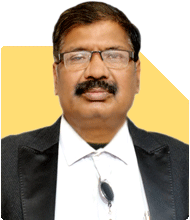Good evening sir Ashok here I am 48 with two kids one 15 yrs and other 1.5 yrs. Doing business but I would like to retire.
I have fd of 4.3 cr which quaternary pay out and I invested in form of fd in my account and 4 sisters of around 4 cr in which I'm the joint account holder and all the account are handled by be mutual fund around 50 lk
Shares around 1cr in different account
Real estate investment around 5cr which is fetching 80 k rent per month loan of around 50k.good running business but still I am some were not satisfied in life please suggest
I
Ans: Hello Ashok,
I understand you’re feeling some dissatisfaction despite your successful business and sound investments. Let's assess your financial situation and develop a strategy to secure a fulfilling and comfortable retirement. I'll guide you step-by-step, considering all aspects of your financial portfolio.
Current Financial Landscape
You have various investments and assets that provide a strong financial foundation. Here's a summary:
Fixed Deposits: Rs 4.3 crore in your name, with quarterly payouts.
Joint Fixed Deposits: Rs 4 crore with your sisters.
Mutual Funds: Rs 50 lakh.
Shares: Rs 1 crore.
Real Estate: Rs 5 crore, generating Rs 80,000 in monthly rent.
Loan: Rs 50,000.
Assessing Financial Goals
First, let’s identify your key financial goals and priorities:
Retirement Security: Ensure a steady income stream.
Children’s Future: Secure funds for education and other needs.
Health and Lifestyle: Maintain a good quality of life.
Financial Freedom: Free from business stress and active management.
You’ve done an excellent job building a diversified portfolio. Your investments in real estate, shares, mutual funds, and fixed deposits are commendable. Managing such a broad spectrum of assets shows your financial acumen and dedication.
I understand your desire to retire and the dissatisfaction you might be feeling. It’s normal to seek more peace and fulfillment, especially after years of hard work. Let’s work towards creating a plan that not only secures your financial future but also brings you peace of mind and satisfaction.
Income Streams and Retirement Planning
Your current income streams include:
Fixed Deposits: Regular interest payouts.
Real Estate: Rental income.
Business: Profits from your business.
To ensure a steady and reliable income during retirement, consider these steps:
1. Optimize Fixed Deposits
Reevaluate the interest rates on your fixed deposits. Ensure you’re getting the best possible rates. Since interest rates can vary, consider reinvesting in higher-yield fixed deposits when possible.
2. Mutual Fund Investments
With Rs 50 lakh in mutual funds, it’s crucial to review your portfolio. Actively managed funds often outperform index funds due to professional management. A Certified Financial Planner (CFP) can help you optimize your mutual fund investments.
Advantages of Actively Managed Funds:
Professional management and expertise.
Potential for higher returns.
Better risk management.
3. Shares and Equity Investments
Your Rs 1 crore in shares should be regularly reviewed and rebalanced. Consider consulting a CFP for insights into which stocks to hold, sell, or buy. Diversifying across different sectors can mitigate risks and enhance returns.
4. Rental Income from Real Estate
Your real estate investments provide a steady rental income of Rs 80,000 per month. Ensure you have a robust property management plan in place to maintain this income stream. Regularly review rental agreements and property maintenance to avoid any disruptions in income.
Debt Management
You have a loan of Rs 50,000, which is relatively small. Ensure timely repayments to maintain a good credit score. Avoid taking on additional debt as you approach retirement to keep financial stress at bay.
Children's Future Planning
With two children, aged 15 and 1.5 years, securing their future is paramount. Here’s how you can plan for their education and other needs:
1. Education Fund
Start by estimating the future costs of education for both children. Consider inflation and rising education costs. Investing in dedicated education savings plans or mutual funds can help you accumulate the necessary corpus over time.
2. Insurance and Protection
Ensure you have adequate life and health insurance coverage. This will safeguard your family’s financial future in case of unforeseen circumstances. Review your existing policies and make necessary adjustments.
Health and Lifestyle Considerations
A good quality of life during retirement is essential. Consider the following aspects:
1. Health Insurance
Ensure you have comprehensive health insurance coverage. Medical expenses can be a significant burden during retirement. A good health insurance policy will cover major medical expenses, reducing financial stress.
2. Lifestyle Planning
Think about how you want to spend your retirement years. Whether it's traveling, hobbies, or spending time with family, plan your finances to support these activities. Having a clear vision of your desired lifestyle will help you allocate funds appropriately.
Financial Freedom and Peace of Mind
Transitioning from an active business life to retirement requires careful planning. Here are some steps to achieve financial freedom and peace of mind:
1. Succession Planning
If your business is doing well, consider succession planning. This involves identifying and preparing a successor to take over the business. You can gradually reduce your involvement while ensuring the business continues to thrive.
2. Passive Income Streams
Focus on building passive income streams that require minimal active management. Your rental income and fixed deposit interest are good examples. Explore other avenues like dividends from shares or interest from bonds.
Final Insights
Retirement planning is a multi-faceted process that requires careful consideration of various aspects of your financial life. Here’s a summary of key points to ensure a fulfilling and secure retirement:
Review and Optimize Investments: Regularly review your portfolio with a CFP to ensure it aligns with your goals.
Ensure Steady Income: Focus on building and maintaining passive income streams.
Plan for Children’s Future: Secure their education and other needs through dedicated investments.
Manage Health and Lifestyle: Ensure adequate insurance coverage and plan for a desired lifestyle.
Achieve Financial Freedom: Gradually transition out of active business life through succession planning and building passive income.
By following these steps, you can create a comprehensive retirement plan that not only secures your financial future but also brings you peace of mind and satisfaction. Remember, retirement is not just about financial security but also about enjoying the fruits of your hard work.
Best Regards,
K. Ramalingam, MBA, CFP,
Chief Financial Planner,
www.holisticinvestment.in





























